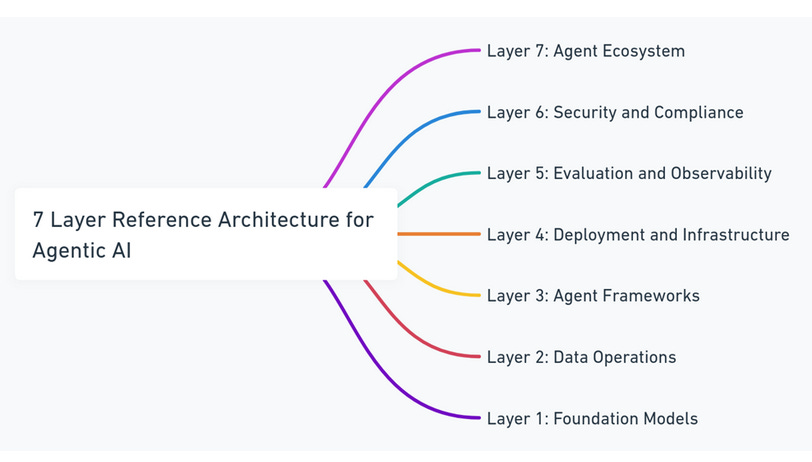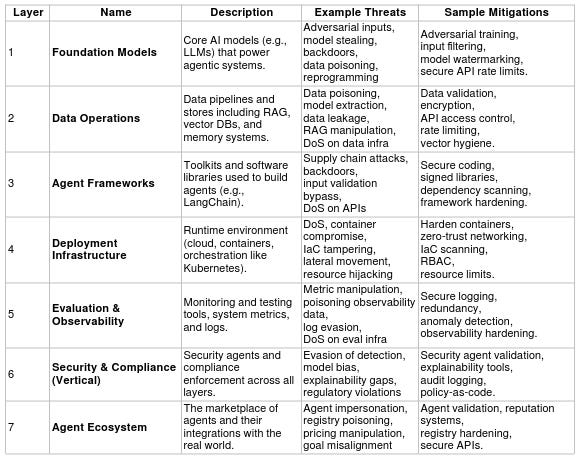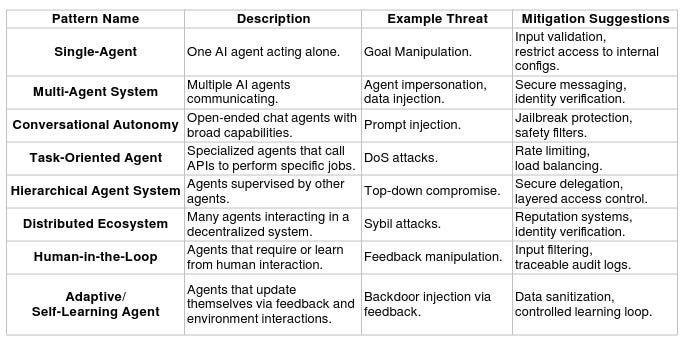Review: Threat Modeling for Agentic AI
Introducing 7 layer MAESTRO
Imagine you're letting a smart intern run your meetings, take notes, write reports, and even make decisions. Now imagine that intern is invisible, never sleeps, talks to 20 other interns at once, and has access to all your tools and data.
Welcome to Agentic AI.
It’s exciting.
It’s powerful.
But it can also go very wrong — unless you build in security from the start.
That’s where Threat Modeling (a fancy term for “thinking ahead about what can go wrong”) comes in.
What Is Agentic AI?
Agentic AI = AI agents that can:
Think for themselves.
Use tools (APIs, databases, email, Slack).
Talk to each other (multi-agent systems).
Remember things.
Act on your behalf.
These agents are like digital employees — fast, tireless, and sometimes... unpredictable.
Why Security Gets Tricky
Traditional security models weren’t built for:
AI systems that decide what to do (not just follow rules).
Agents that talk to each other and form “AI teams”.
Constant memory and tool use that grows over time.
If you don’t plan ahead, here’s what can happen:
🧠 Memory Poisoning: AI remembers bad info forever.
🛠️ Tool Misuse: Agent uses its access in unsafe ways.
🤖 Rogue Agents: One AI convinces others to go off-script.
💰 Denial of Wallet: Agent racks up huge cloud/API bills.
📉 Trust Failures: You lose customer trust after a security slip.
Enter MAESTRO 🧩
MAESTRO is the new framework from OWASP built specifically for Agentic AI.
Think of it as a checklist that works across 7 layers of your AI stack.
Here’s what it stands for:
Takeaway: MAESTRO helps you map risks from top to bottom — not just the AI brain, but the arms, legs, and nervous system too.
How to Use MAESTRO Without Being a Cyber Guru
Let’s say you’re deploying an agent that helps with customer support. Here’s how you’d think with MAESTRO:
Model – Could the agent hallucinate answers? Add a fact checker.
Agent – Does it remember things it shouldn’t? Limit memory scope.
Ecosystem – Could another agent trick it? Set trust boundaries.
Security – Who can the agent impersonate? Use Role-Based Access Control (RBAC).
Tools – Can it send emails? Add guardrails to prevent phishing.
Runtime – Is it logging actions? Make logs immutable.
Outcome – Is it aligned with your customer policy? Test behavior in real scenarios.
This isn’t rocket science — it’s structured common sense.
MAESTRO Framework: Table Breakdown
CROSS LAYER THREAT
COMMON AGENTIC PATTERN AND THREATS
Using MAESTRO:
Break It Down – Map your system into MAESTRO's 7 layers.
List Threats – Use the threat examples above to list what could go wrong in each layer.
Look Across Layers – Think how threats in one layer (like framework) might hit others (like data).
Prioritize – Rate which threats are worst based on impact + likelihood.
Fix It – Add the right controls (rate limits, RBAC, scanning tools, etc.).
Watch It – Keep monitoring. Threats change. So should your defenses.
What to Take Today
If you're short on time, here's your 5-point cheat sheet:
✅ Ask: "What decisions can our agents make without a human?"
✅ Get a security team familiar with MAESTRO or bring in a specialist.
✅ Require Red Teaming for your AI systems — simulate attacks before they happen.
✅ Build a feedback loop: Monitor what agents actually do and course-correct.
✅ Stay compliant: Secure logging, identity tracking, and audit trails are must-haves.
Final Word
Agentic AI is like hiring 100 interns with PhDs who never sleep. If you don’t define guardrails, they’ll make decisions you never intended — and they’ll do it fast.
MAESTRO gives you a way to keep the power and the peace of mind.
You don’t need to be a technologist. You just need to ask the right questions — and make sure your team is modeling threats before they hit production.
📚 References & Further Reading
SplxAI. The Current State of Agentic AI Red Teaming. 2025. https://splx.ai
→ Comprehensive whitepaper exploring the security landscape of Agentic AI systems, including practical red teaming tactics and the MAESTRO threat modeling approach.OWASP Agentic Security Initiative. Agentic AI – Threats and Mitigations, Version 1.0a, February 2025. https://owasp.org
→ A practical threat taxonomy and guide to mitigations for multi-agent and LLM-based AI systems. Includes examples, playbooks, and a rich Agentic AI reference architecture.Cloud Security Alliance (CSA). Agentic AI Threat Modeling Framework: MAESTRO, February 2025.
https://cloudsecurityalliance.org/blog/2025/02/06/agentic-ai-threat-modeling-framework-maestro
→ The official explainer of the MAESTRO framework, detailing how to assess agentic threats across seven key architectural layers. Ideal for CISOs, risk officers, and technical leads.






